
Aeolochroma is a genus of moths in the family Geometridae described by Prout in 1912.

Chorodna is a genus of moths in the family Geometridae. One of its synonyms is Medasina.

Chrysocraspeda is a genus of moths in the family Geometridae described by Charles Swinhoe in 1893.

Cyclophora is a genus of moths in the family Geometridae. Many species are referred to as mochas in reference to their colouration, primarily in Europe.
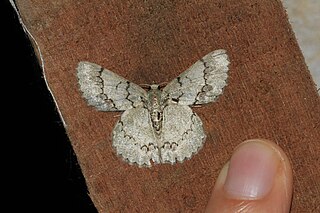
Epipristis is a genus of moths in the family Geometridae erected by Edward Meyrick in 1888.

Hypodoxa is a genus of moths in the family Geometridae described by Prout in 1912.
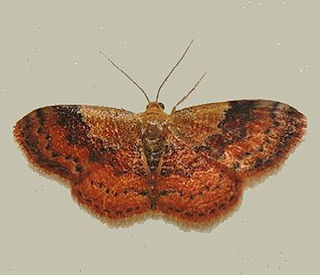
Leptostales is a genus of moths in the family Geometridae.

Lobocleta is a genus of moths in the family Geometridae erected by Warren in 1906.

Perizoma is a genus in the geometer moth family (Geometridae). It is the type genus of tribe Perizomini in subfamily Larentiinae. The tribe is considered monotypic by those who include the genera Gagitodes, Martania and Mesotype in Perizoma. Some other less closely related species formerly placed here are now elsewhere in the Larentiinae, e.g. in Entephria of the tribe Larentiini.

Pingasa is a genus of moths in the family Geometridae first described by Frederic Moore in 1887.

Scopula is a genus of moths in the family Geometridae described by Franz von Paula Schrank in 1802.

Sterrhinae is a large subfamily of geometer moths with some 3,000 described species, with more than half belonging to the taxonomically difficult, very diverse genera, Idaea and Scopula. This subfamily was described by Edward Meyrick in 1892. They are the most diverse in the tropics with the number of species decreasing with increasing latitude and elevation.

Scopulini is a tribe of the geometer moth family (Geometridae), with about 900 species in seven genera. The tribe was described by Philogène Auguste Joseph Duponchel in 1845.
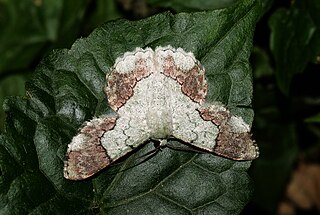
Pingasa ruginaria is a species of moth of the family Geometridae first described by Achille Guenée in 1857. It is found in India, south-east Asia, the Ryukyu Islands and Sundaland.

Asthenini is a tribe of geometer moths under subfamily Larentiinae first described by Warren in 1893. The tribe has been combined with Eupitheciini in the past, most notably by Jeremy Daniel Holloway in his work The Moths of Borneo.

Eupitheciini is a tribe of geometer moths under subfamily Larentiinae, often referred to as pugs. The tribe was described by Tutt in 1896.
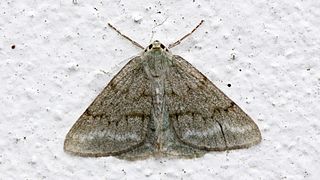
The Pseudoterpnini are a tribe of geometer moths in the subfamily Geometrinae. The tribe was described by Warren in 1893. It was alternatively treated as subtribe Pseudoterpniti by Jeremy Daniel Holloway in 1996.
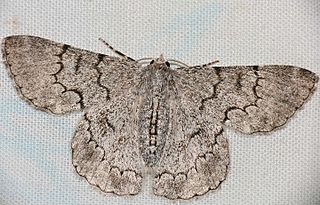
Pingasa rhadamaria is a moth of the family Geometridae first described by Achille Guenée in 1858. It is found on the Comoros, Madagascar and São Tomé and Príncipe and in Sierra Leone, South Africa, the Gambia, Zimbabwe, Cameroon, Ghana, Ethiopia, Kenya, Tanzania and Zambia.
Rhodostrophiini is a tribe of the geometer moth family (Geometridae), with about 200 species in 17 genera and five genera tentatively associated with the tribe.

Sterrhini is a tribe of the geometer moth family (Geometridae), with about 825 species in 19 genera. There are also 6 genera with 36 species tentatively associated with the tribe. The tribe was erected by Edward Meyrick in 1892.




















